Šibenik Features in Season 6 of Below Deck Mediterranean!
June 30th, 2021 - The most-watched American reality series Below Deck Mediterranean, which was filmed last year in Croatia in the Šibenik area, started showing on popular cable television Bravo TV, said Iva Bahunek, head of the Croatian Tourist Board in Los Angeles.
"The show will last at least 16 weeks, which is the perfect time period for additional promotion of Croatia. Namely, this is the period when Americans most often book their trips for next year, and an additional benefit is the fact that this series is shown in other countries as well. The production team assessed that of all the seasons so far, the most attractive and most interesting is the season filmed in Croatia, which is even more pleasing," Bahunek pointed out, adding that this was the first Hollywood production to be filmed entirely and without interruption over the past year outside the U.S. during the global pandemic.
HTZ reports that this popular American reality show is broadcast on the Bravo TV network, one of the most-watched American cable televisions, which in 2020 recorded a large increase in "on-demand viewing", with 427 million, as well as 222 million "live broadcasts". The concept of the series includes following the professional and private lives of the crew and their guests on mega yachts, and so far a total of 15 seasons of this reality series have been filmed, consisting of three separate units: Below Deck, which is filmed in tropical destinations, then Below Deck Mediterranean, which is filmed in the Mediterranean, and the latest variant of the Below Deck Sailing Yacht, which, unlike other variants of the series, is filmed on large sailboats.
Many American viewers of Bravo TV, before the start of the Below Deck Mediterranean broadcast, were able to enjoy the beauties of Croatia, more precisely of Split through the broadcast of the Below Deck Sailing Yacht 2 franchise.
And even cooler news?
Most of the Below Deck Mediterranean Season 6 crew visited the Break Time shop in Split, shortly after filming for the season ended in Šibenik!
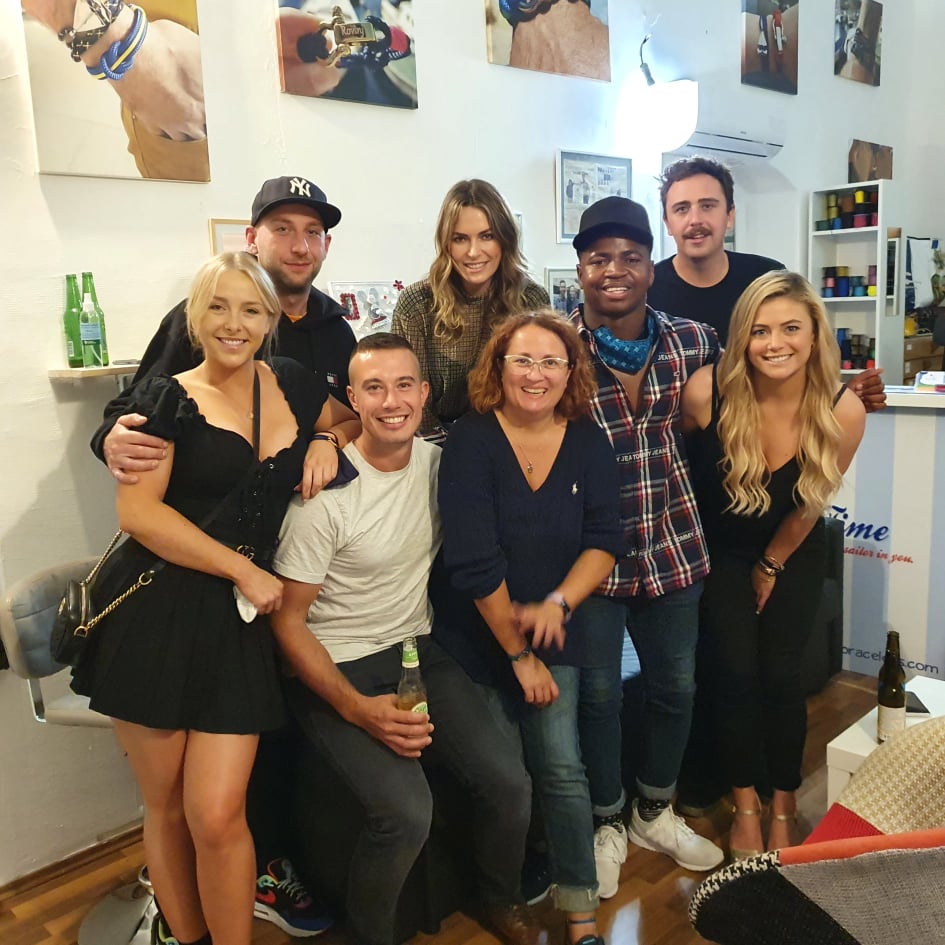
"We got to hang out with them a bit in our VIP area upstairs and we are now so excited to find out what adventures they had aboard M/Y Lady Michelle together, in the weeks before they came to Split," said Break Time. You can read more about it here!
For more, follow Made in Croatia.
To follow the latest travel updates, follow TCN's dedicated page.
In Love With the Frozen Moment: Meet Tonka Lokas From Šibenik
May 28, 2021 - Sometimes, the best way to learn, discover or connect with a Croatian city is through photography. And not just with drones, but also from a more humane and honest point of view. A great example is through the eyes and lens of Tonka Lokas, a talented and promising 23-year-old photographer from Šibenik.
Sometimes I wish I could brag about a past where, as a child, I discovered through a game or a hobby something that would eventually develop into a passion or professional interest. This is the case of many painters who began by scribbling on the walls, singers who won first places in school competitions, or novelists who wrote letters to their college sweethearts. But that wasn’t my case.
In an unsafe city, I grew up within four walls for protection. Don't get me wrong, all my childhood memories were fond and I constantly look back to make sure of it. How? Surely the box full of photographs that are at my parent’s house plays an important role there. Photography, in general. But you will see later that I am not the best one to explain why.
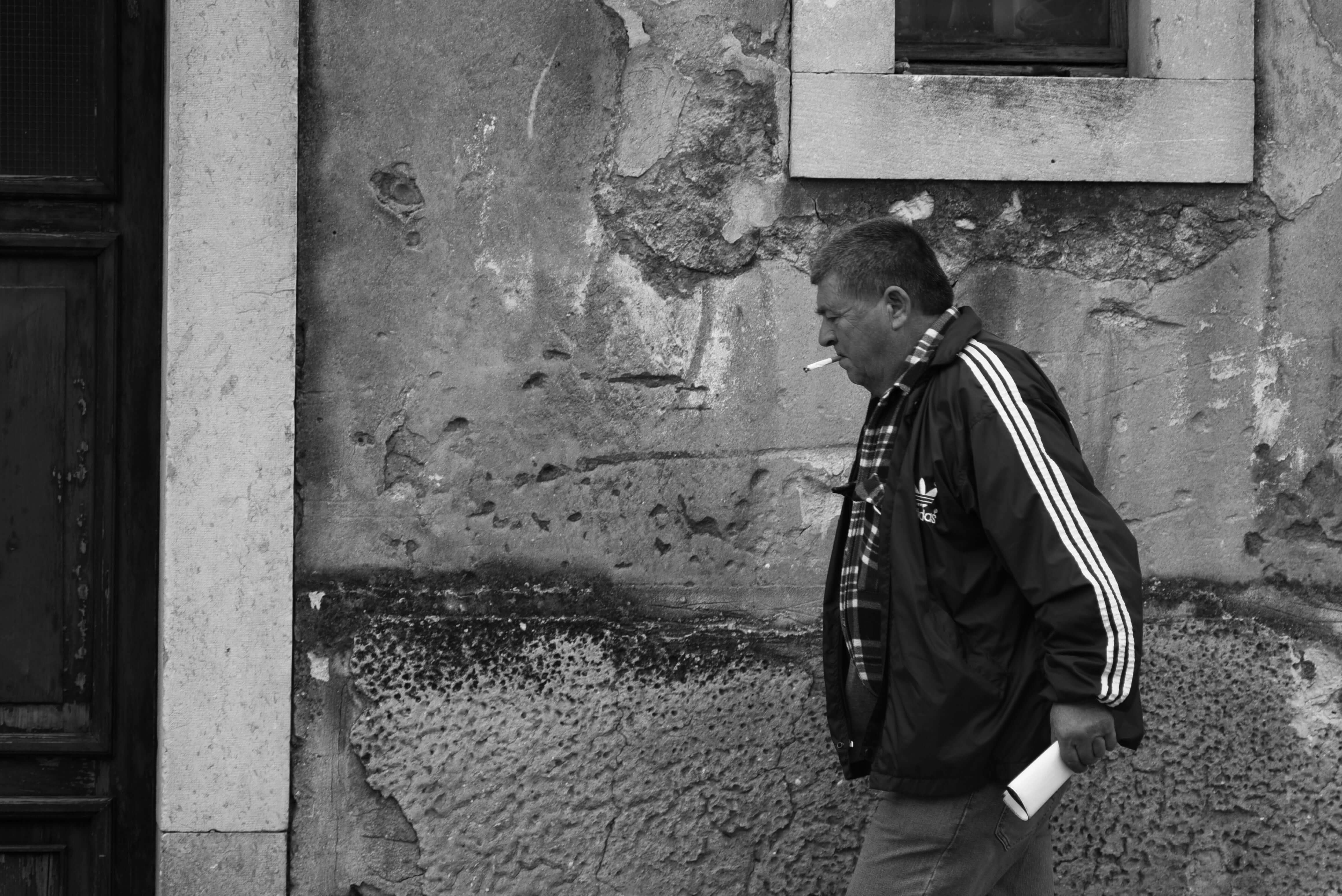
I say this because I believe that being in contact, from a very young age, with everything that surrounds you and moves, is stimulating. See how people interact in the street, how the other children play in the park, listen to what a couple of old men are talking on a bench, wander through the market stands on a Sunday morning... a lot to deconstruct in our little heads. But again, that wasn’t my case.
I’ve been living in Croatia for less than two years, and photography has helped me connect with a country that I am still trying to decipher and get to know better. And like me, every day I saw dozens of tourists or foreign students walking through the streets of Rijeka, Split, and Zagreb with a camera under their arms, capturing moments, people, expressions, scenes... it helps us to interpret what is around us, and later it facilitates the communication process with those we love.
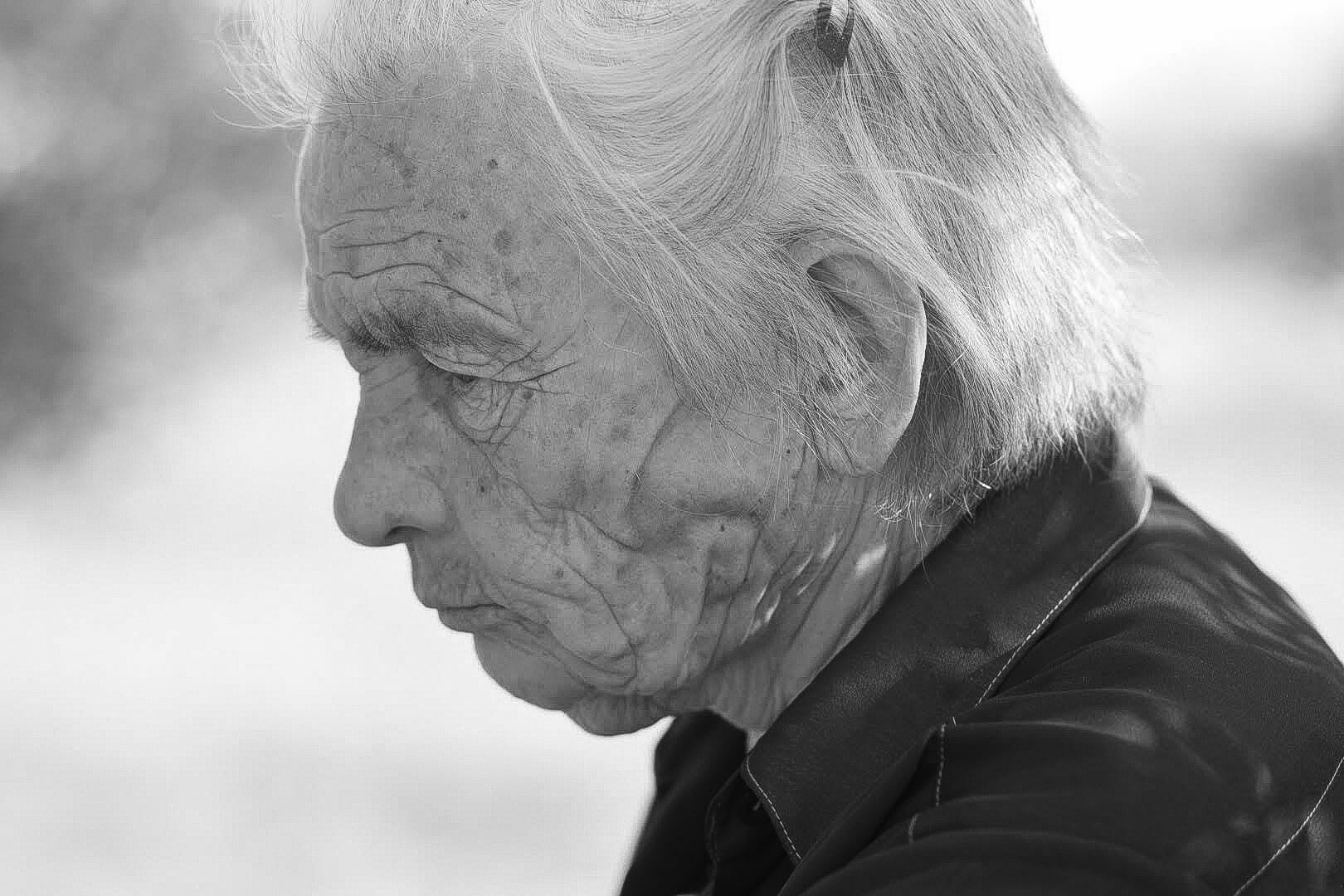
But I also thought that it would be incredible to be able to learn more about a country or a city through the eyes of a person who grew up next to that place. And that’s the story of Tonka Lokas, from Šibenik.
A few months ago, I decided to share my photos on my Instagram account. I did not generate the impact that I expected, but I felt curious about learning more from the people who started following me. Especially those based in Croatia, hoping that through their pictures I could learn more about this country and maybe find some inspiration. And that’s how I discovered Tonka Lokas, a 23-year-old nurse, born and raised in the historical Dalmatian city of Šibenik, and her unique way of observing her city through a lens.

Tonka Lokas, from Šibenik
I immediately felt captivated with her photographs, since it is exactly the perspective with which I like to observe what happens in the street every day. It is true that on many occasions we involuntarily criticize everything that doesn’t suit our artistic preferences, but I think that as far as sitting and reflecting if a photograph is good or not, I prefer to think that each one of them serves a purpose. Even if that purpose is to get more likes.
And it is that, in recent years, most of the photographs that I see about Croatia are those taken from the point of view of a bird with a drone. And that’s fine! But it’s just one way to see it. I felt, honestly, that people were ignored. And this is not just in Croatia, but I believe it’s happening all around the world. Tourism? Sure. That’s the purpose, of course. There's so much to enjoy and discover through our own eyesight. Let’s never forget about the richness of the human factor within the culture. In this particular case, I saw a purpose to tell certain stories that we tend to ignore or pay no attention to when we walk from one place to another in our town or city.
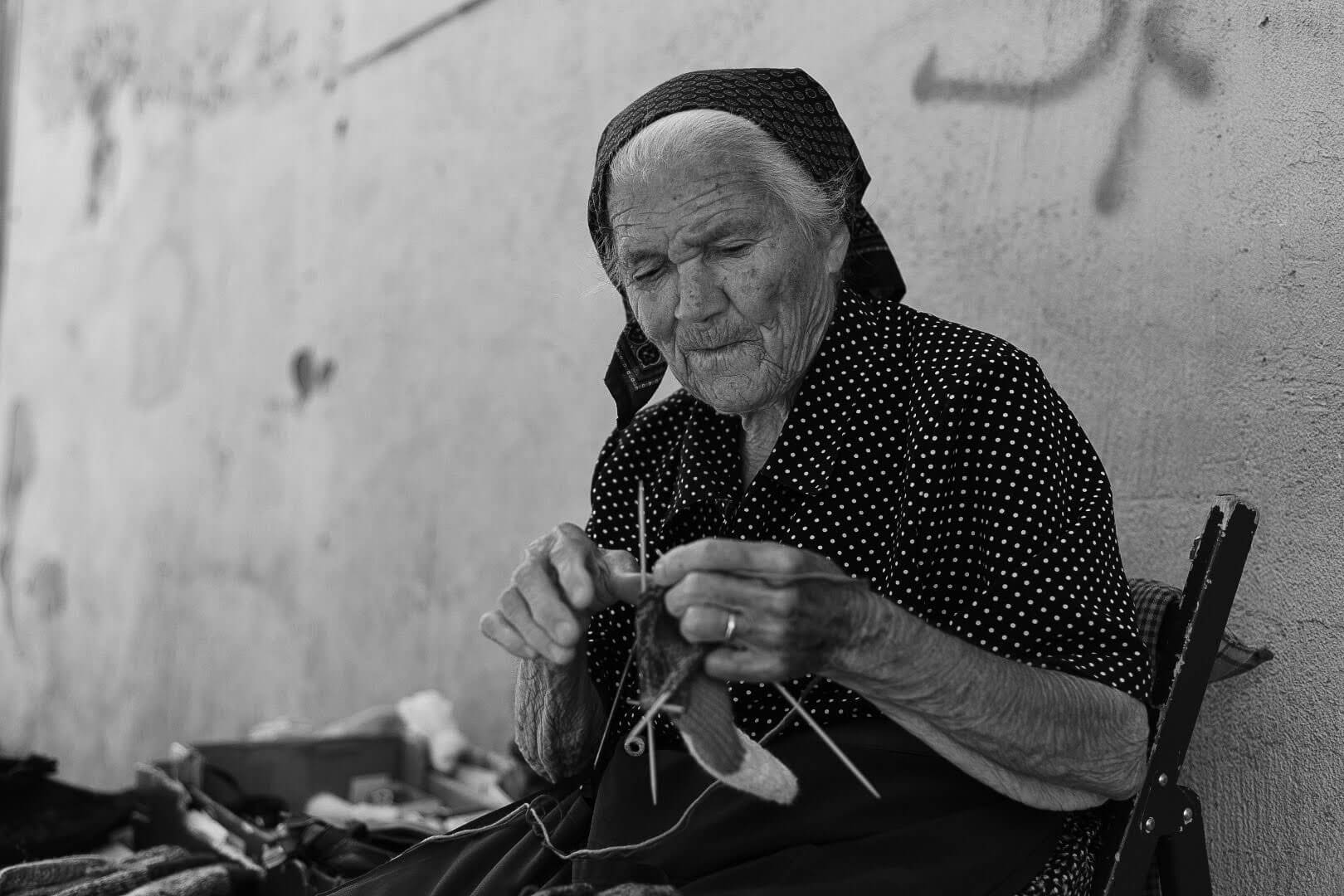
I was pleased to meet a different set of eyes. Ones that observed humanity, emotions, stories, relationships… Almost as if the photographs were taken with them, with each blink. A personal observation through the ancient streets of Šibenik, those that Tonka has been walking since she was very little and that now she photographs with her camera. It seemed to me like an incredible opportunity to learn more about her amazing life story and the city of Šibenik through her words, but especially, through her lens.
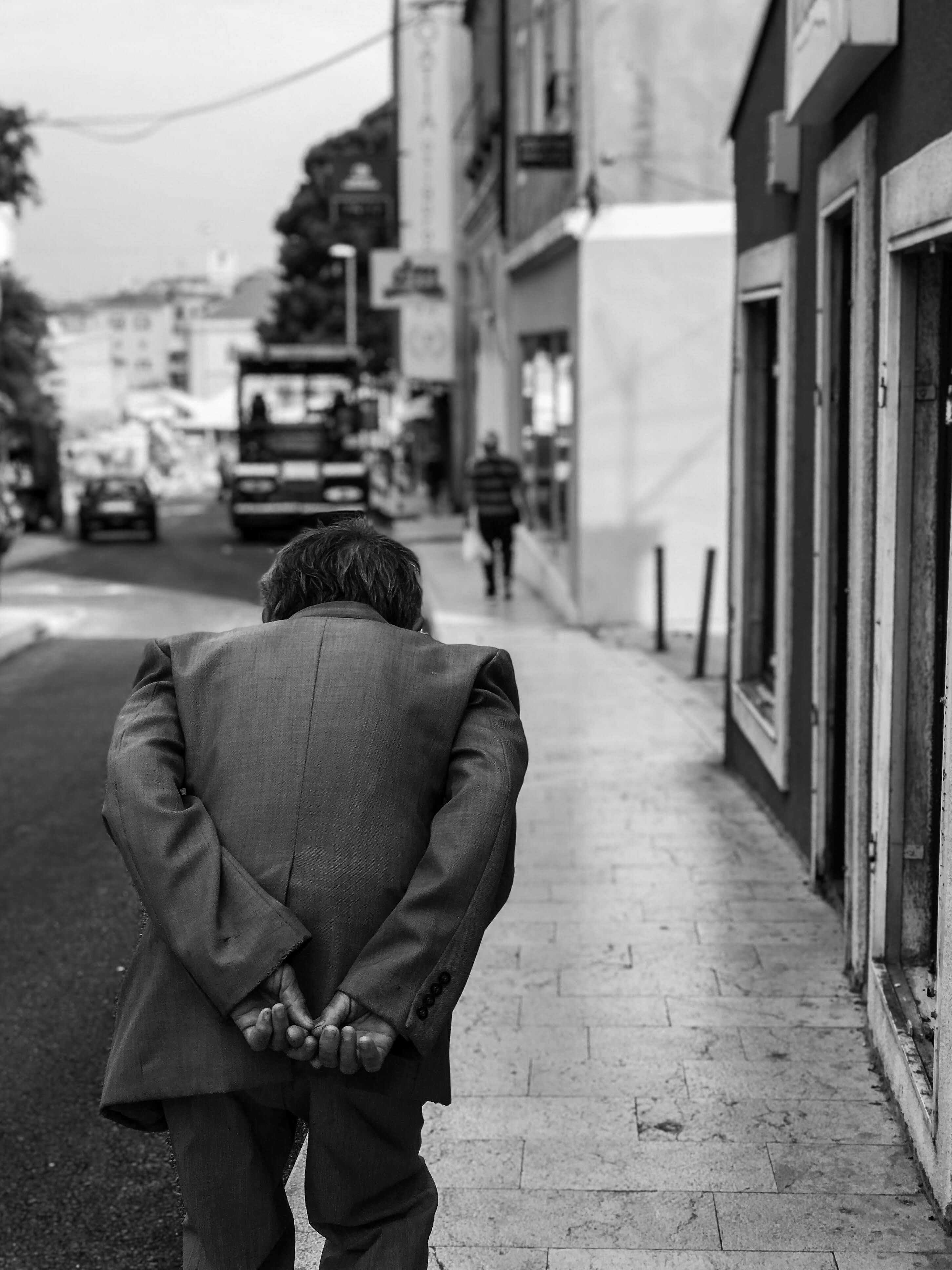
Tonka lives in a little apartment with her boyfriend Božo, their baby girl named Marica, and many, many cacti, which in fact she loves a lot. I was surprised to learn that Tonka did not study or is currently studying photography, as I had initially thought. Instead, she graduated from medical school, majoring as a nurse. However, photography has indeed been part of her life as she grew up.
What memories do you have from your childhood? Is there any connection between it and your photography? Are they any photographers in your family?
My childhood was filled with games and fun, especially because of the international children’s festival that takes place in my city every year. I discovered photography while attending one of the festival's workshops. My family had a little digital Sony camera and I always played with it. That workshop helped me to learn how to use the camera properly, at least as much as I managed to learn at the age of 10. And so began the love of the frozen moment. There were no professional photographers in my family, but my uncle was our family photographer and because of him we have a lot of childhood pictures.
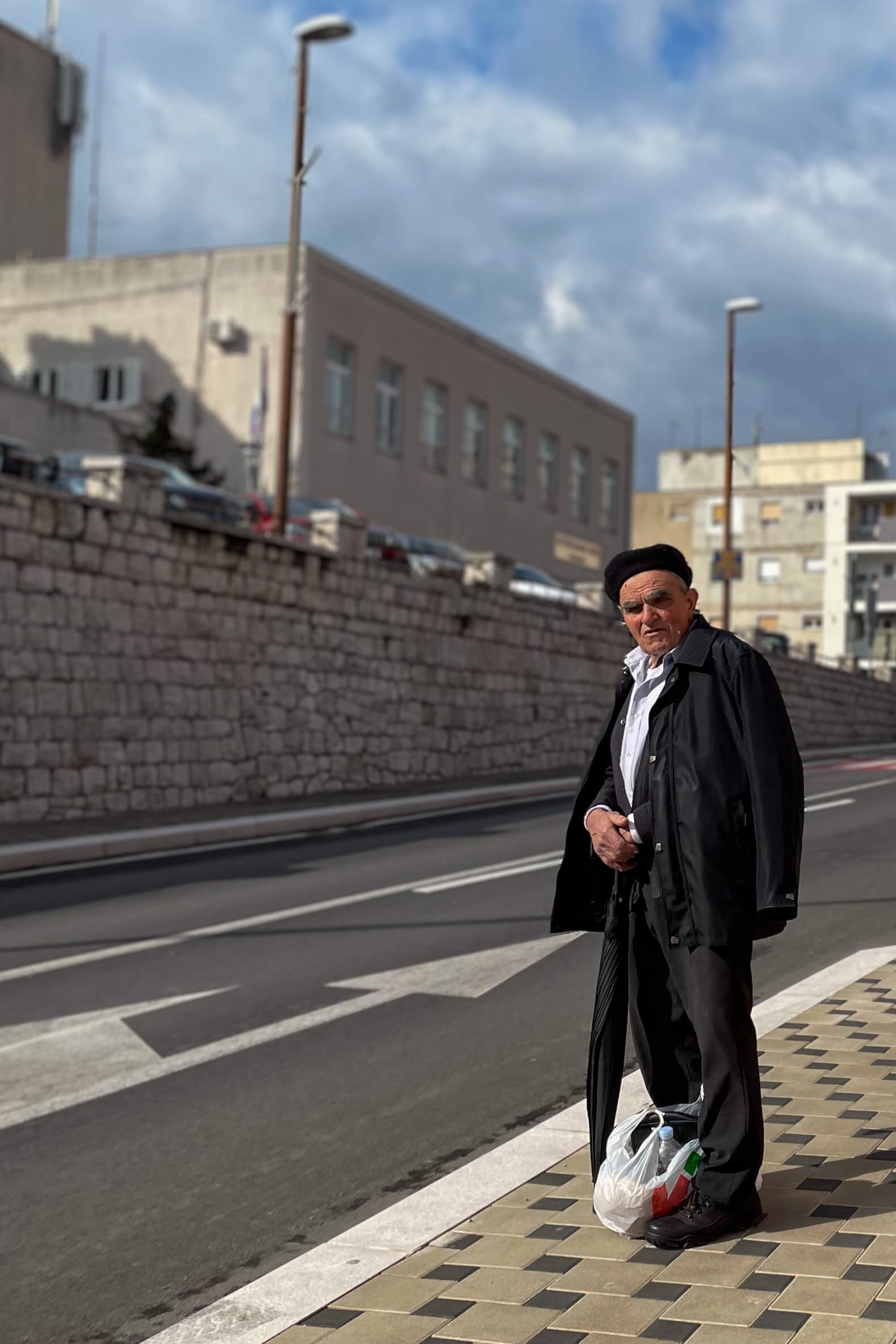
Are you studying, or did you study photography?
I am not studying photography, but I plan to go to Zagreb for a photography course this fall, so I will see what opportunities will open up for me after that.
When did you first realize that photography was your passion?
I think I became aware of that in high school because that’s when I got a little Lumix camera from an old photographer. Exploring all the buttons and settings made me happy and I learned something new every day. I was constantly annoying my friends by taking their pictures, but I have to thank them for putting up with all my ideas and supporting me in the beginning.
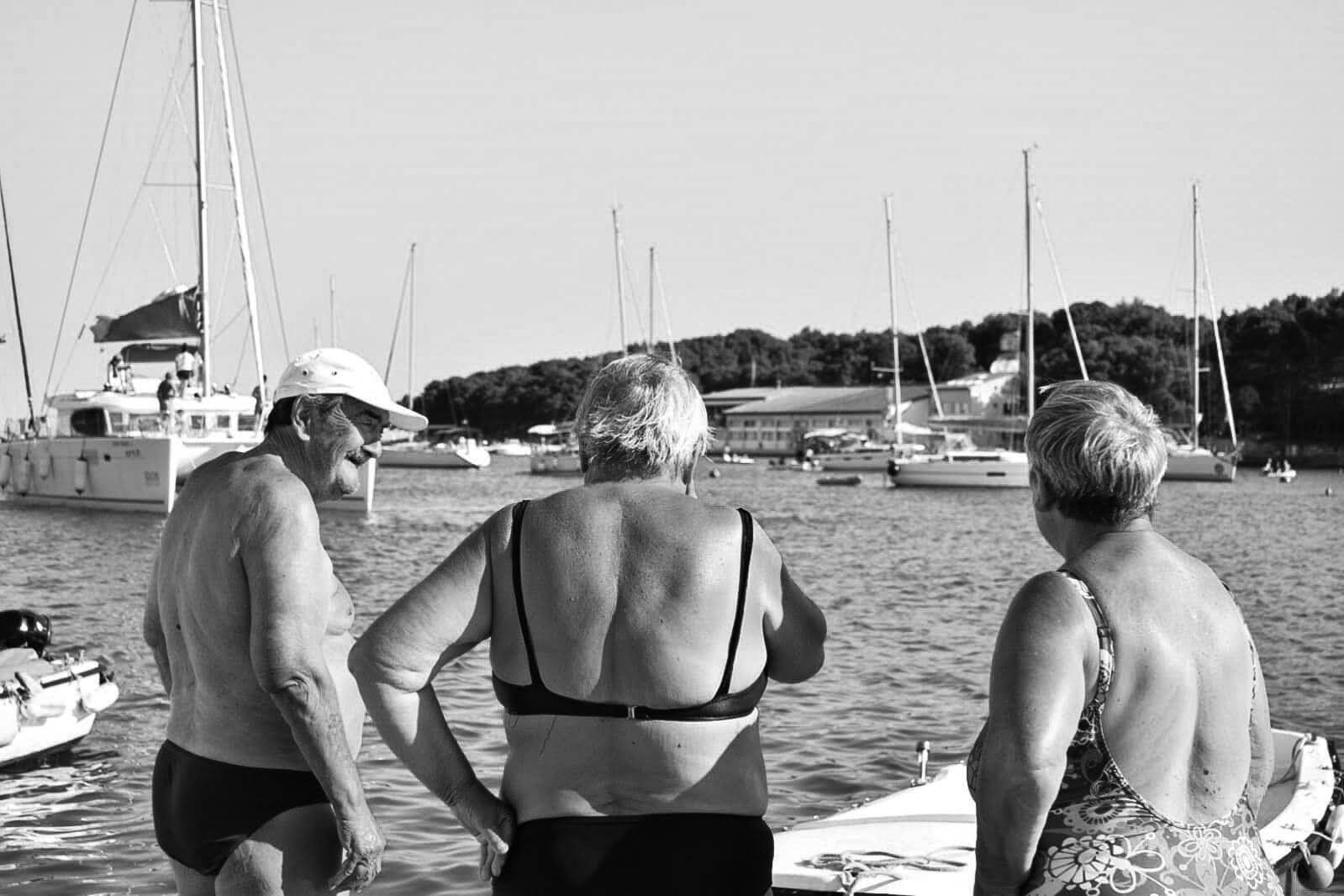
It is well said that photographers are artists just like a painter, an actor, or a composer. But why did you choose photography? How does it help you express what you see and feel?
Art is something that makes us alive. For me, any expression of thoughts and feelings is art. As a child, I loved to look at photos and ask my parents to tell me what happened and what they talked about on the day it was taken. The background story of the photo is still my main concern/topic while talking about photography.
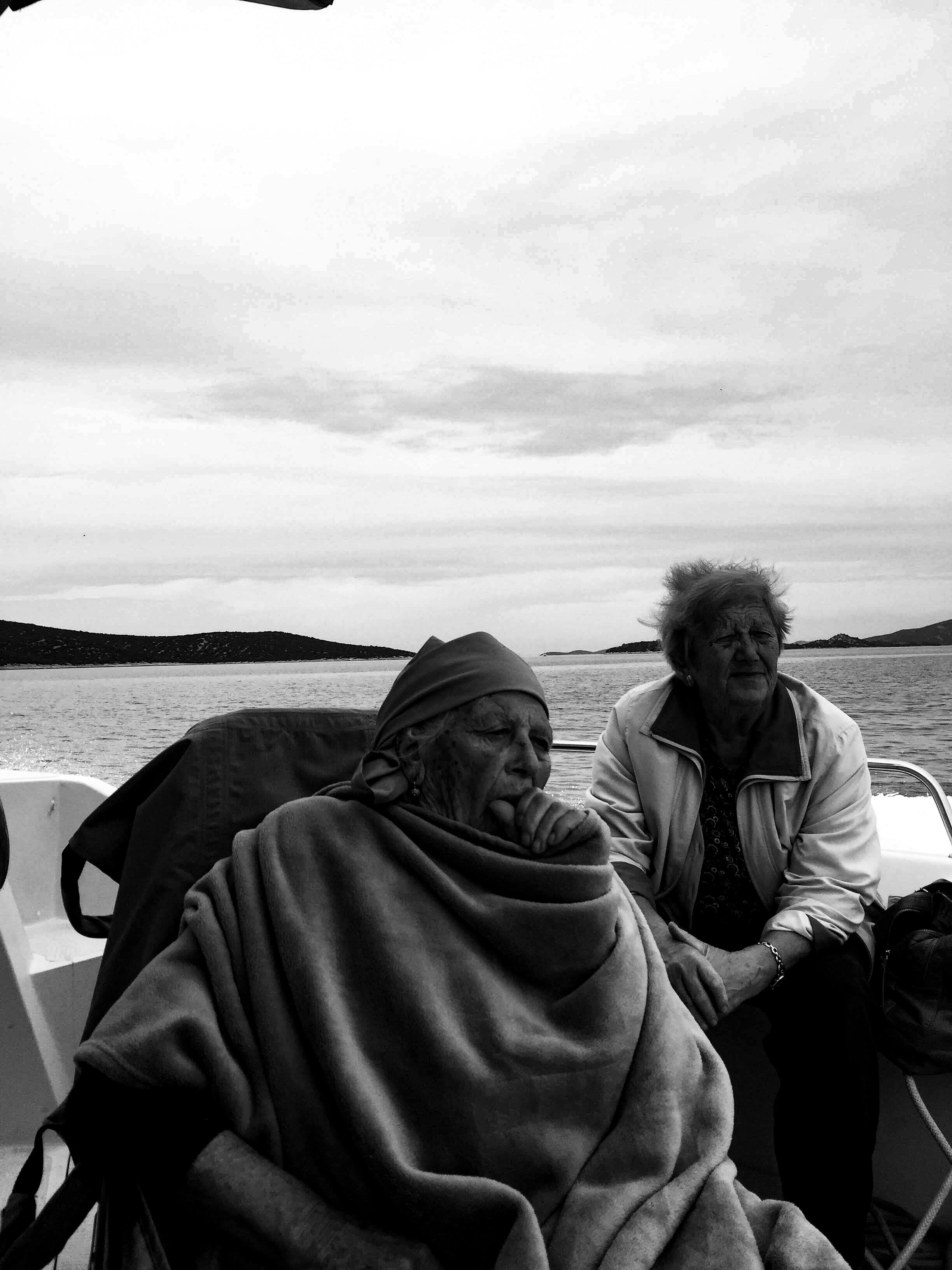
How would you describe your photos? What are you trying to tell the world through them?
My first solo exhibition was called ”Notice”. I could even say that this title is my motto in photography. I want to show people what they miss while staring at cell phones or walk with their heads down. I want to convey the emotion of people who know how to be both happy and sad but are equally beautiful. Every person has a different smile, wrinkles, worries... Every person tells their story, although I don't know the life stories of all these people, I like to imagine myself and I give that freedom to everyone who looks at my photos. You don't have to be a child to be able to fantasize.
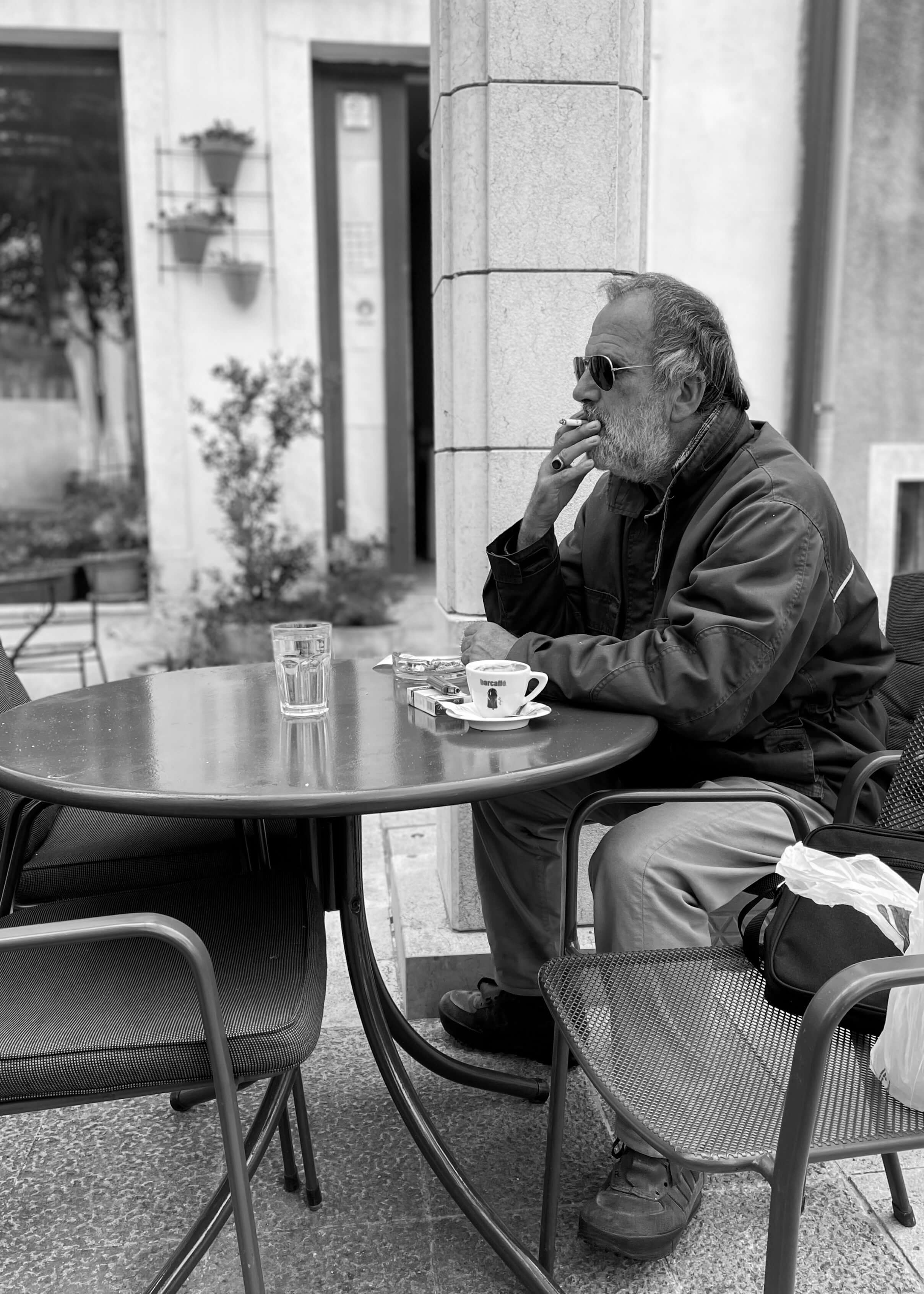
Most photographers that are from, and those who come to Croatia, see it as the ideal place for landscape pictures, sunsets, drone photography… but you seem to be more interested in people. How come?
Croatia is a beautiful country and it sure does get photographed a lot nowadays. I don't mind seeing other people's photos of nature, sunsets, landscapes... but when I find myself in nature I enjoy it as intended, without a camera. Ok, occasionally I capture a sunset or two.

Your pictures are mostly from Šibenik. What makes it different from other Croatian cities?
Šibenik is my small town, full of great and creative people and artists. I know it's every stone and street and I love it's every single corner. I grew up there and I plan to stay there.
''Every person tells their story, although I don't know the life stories of all these people, I like to imagine myself and I give that freedom to everyone who looks at my photos. You don't have to be a child to be able to fantasize''.
- Tonka Lokas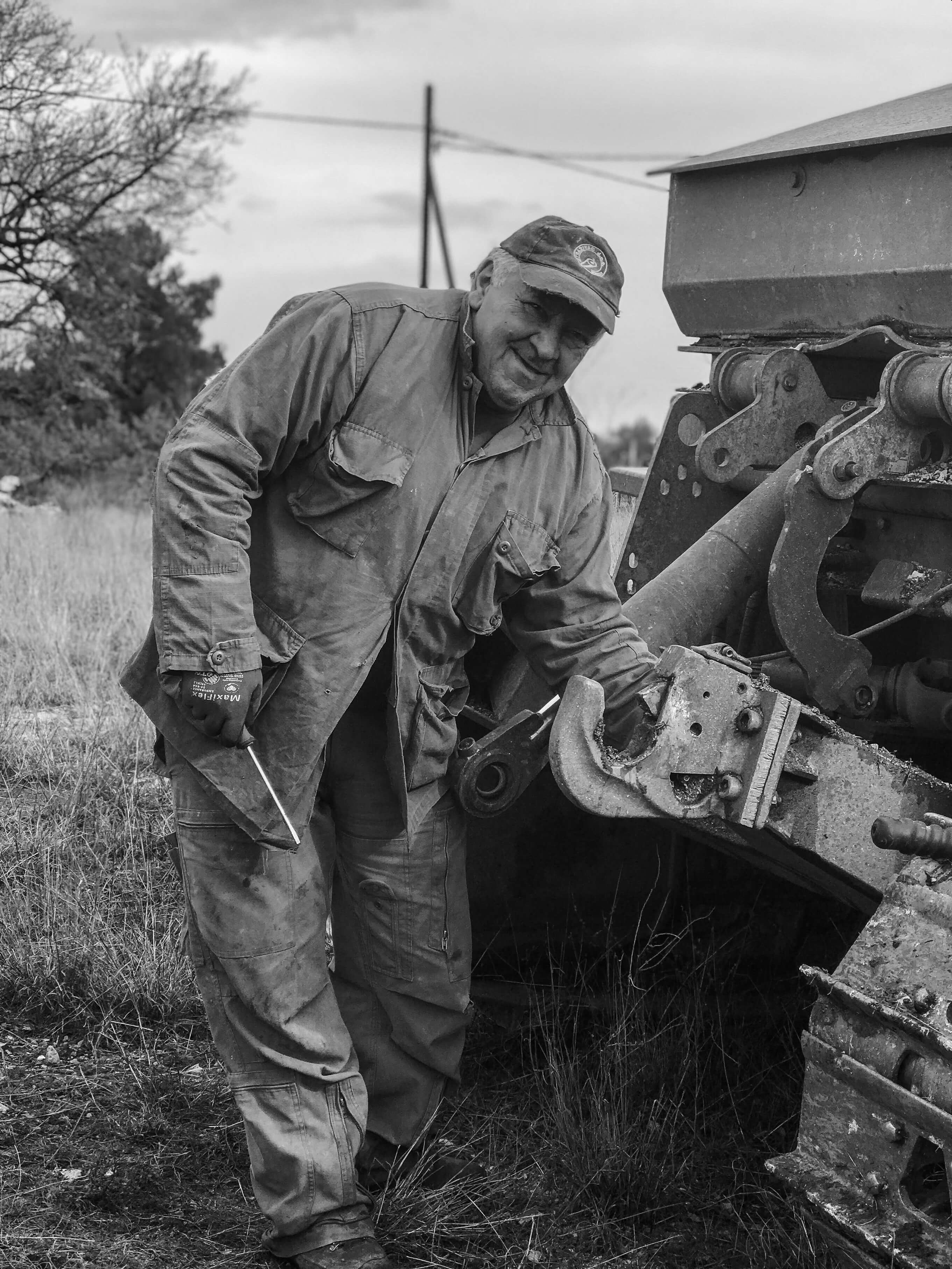
Being a photographer, where do you see yourself in 10 years? Would you like to work as an independent photographer, work for a magazine, agency…?
In 10 years from now? I dream of having a space dedicated to teaching young people and children about photography and doing workshops. I'm afraid that true photography fades slightly due to technology and high-end cameras on mobile phones. It's all great, don't get me wrong, but we take it as given, and I like to see it as something more. That's what I'd like to show to those younger generations; a love of cameras and developed photographs.
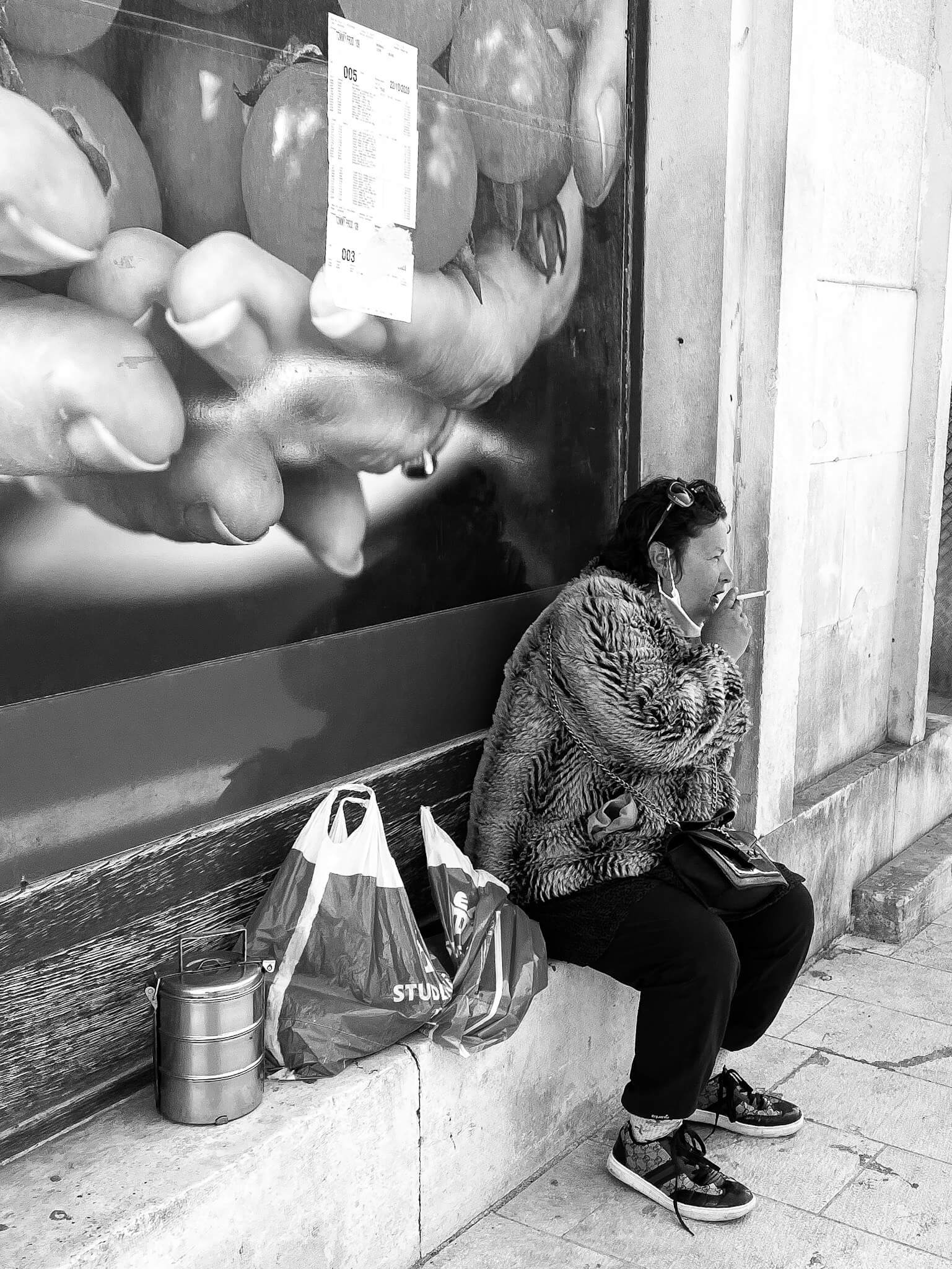
Nowadays, we see that most pictures shared through social media stand out for their bright and saturated colors. Why are you choosing the black and white format?
For me, black and white photography has a soul. And it all revolves around the imagination and emotion I want to convey. Talking about street photography, where everything is full of colors, we can say it's difficult for photo viewers to dig the emotion I experienced taking that photo. People are easily attracted to color, and maybe I’m just in love with a colorless world where we’re all equal.
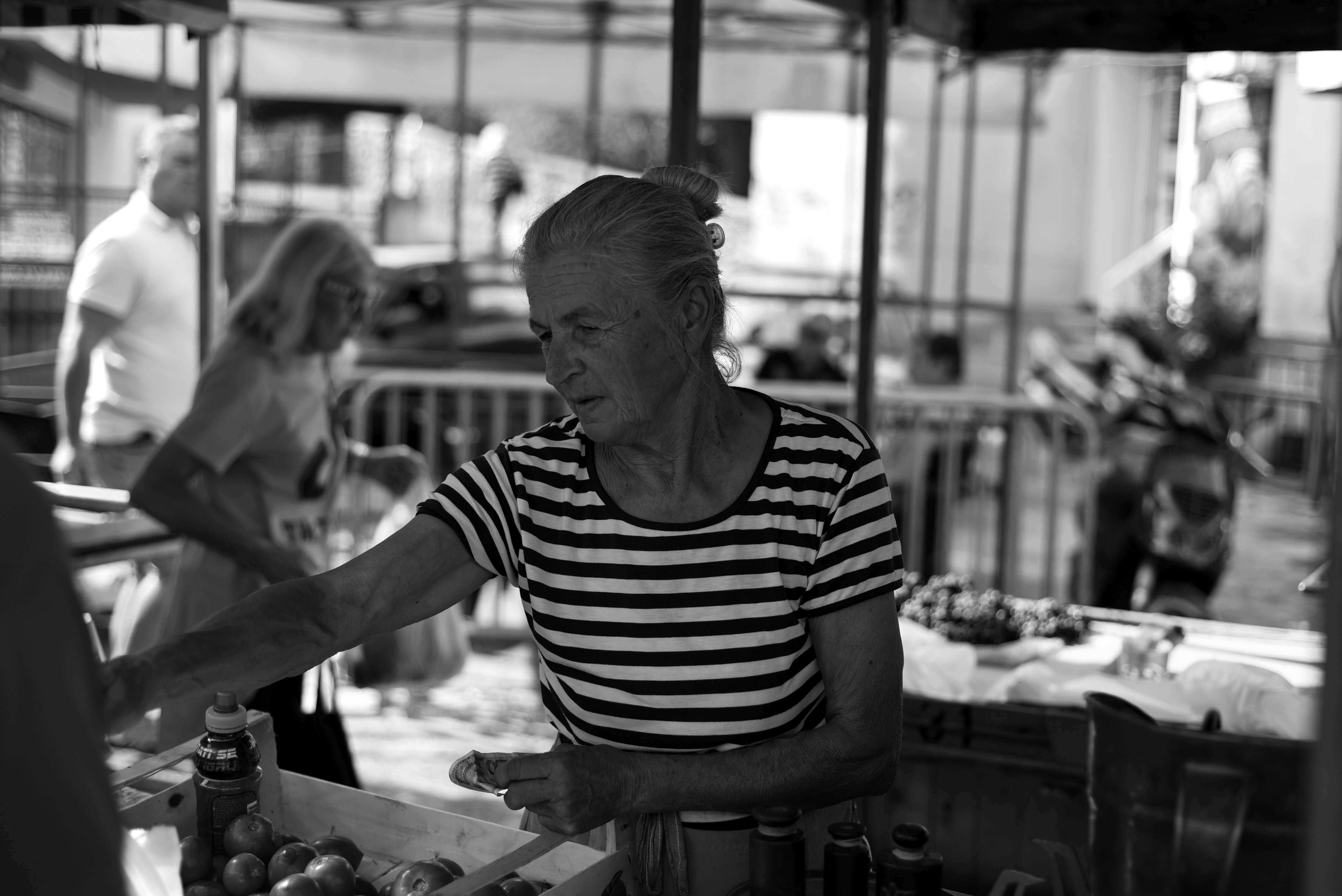
How is a day in your life? Do you prepare yourself exclusively to take photos when going out? Or do you wear your camera as an accessory and it happens spontaneously?
I always carry a camera on my shoulder. I stop in one place, look around and catch spontaneity in people. We are most honest when we do not know that someone is taking our picture.
Who are your main photography references?
I strongly rely on a feeling while taking photos, so I can't say I look up to anyone in particular. But some of my favorite photographers are Bruce Gilden, Lee Friedlander, and Diana Arbus.

What are your short-term plans as a Croatian photographer? Are you currently working on a project? Are you planning on traveling?
My next plan is to realize an exhibition that I have been thinking of for quite some time. And of course, to learn, work and thrive in the photographic world. I love to travel, but because of the Covid situation, we all have to be a little more patient.
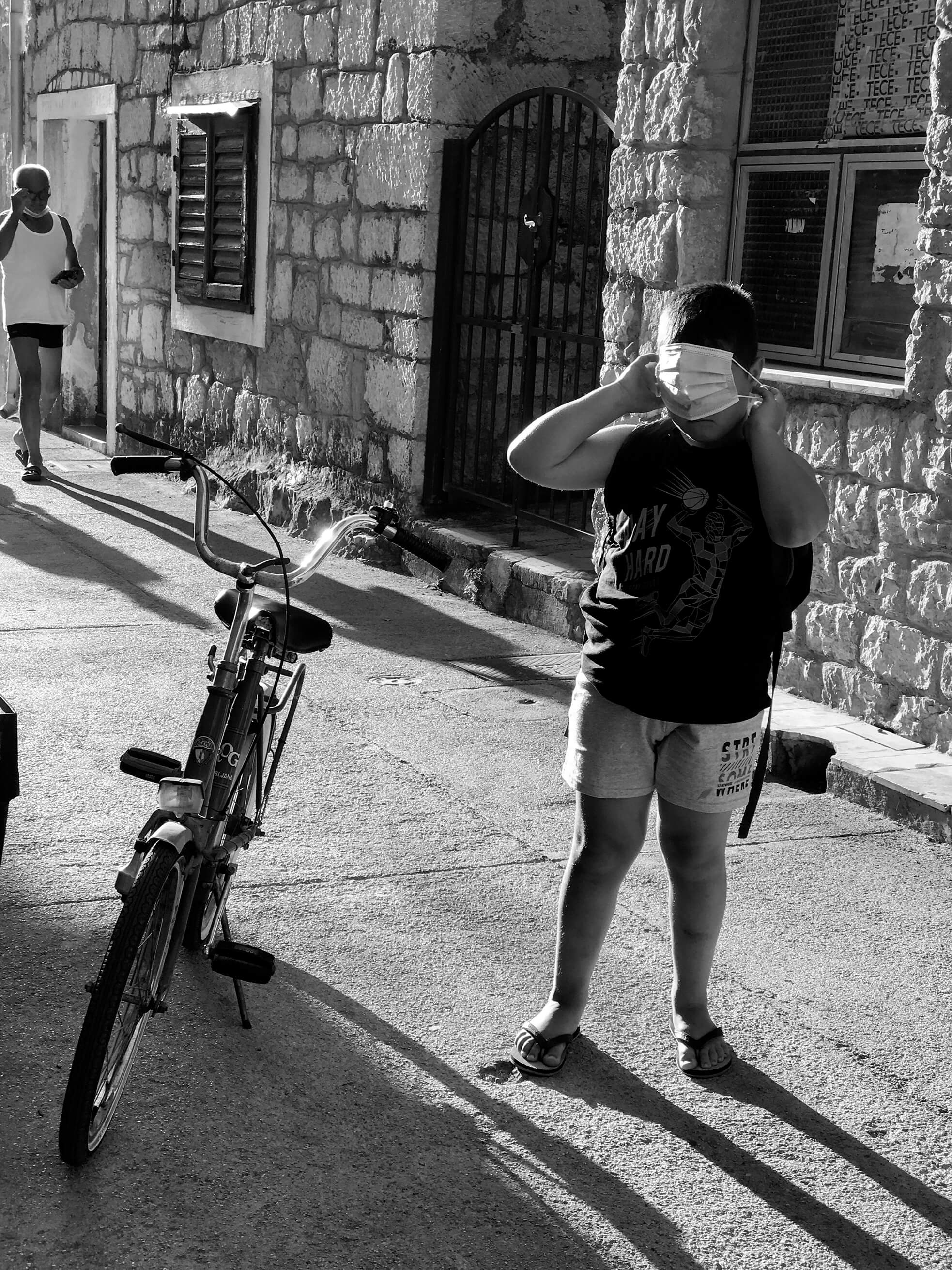
Besides photography, how would you describe your life in Croatia? What else do you like to do?
Life in Croatia is beautiful and relaxed. As young people, we have a lot of options to travel. My boyfriend and I travel a lot. Lately, it's mostly around Croatia, let's say once a month. Our goal is to visit as many islands as possible and of course the entire Dalmatian coast. We are Dalmatians and winter is not very dear to us, so we haven't started touring eastern Croatia yet.
I work as an emergency ambulance nurse and I love my job very much. As hard as the job is, at the end of the day it’s nice to know you’ve helped someone!
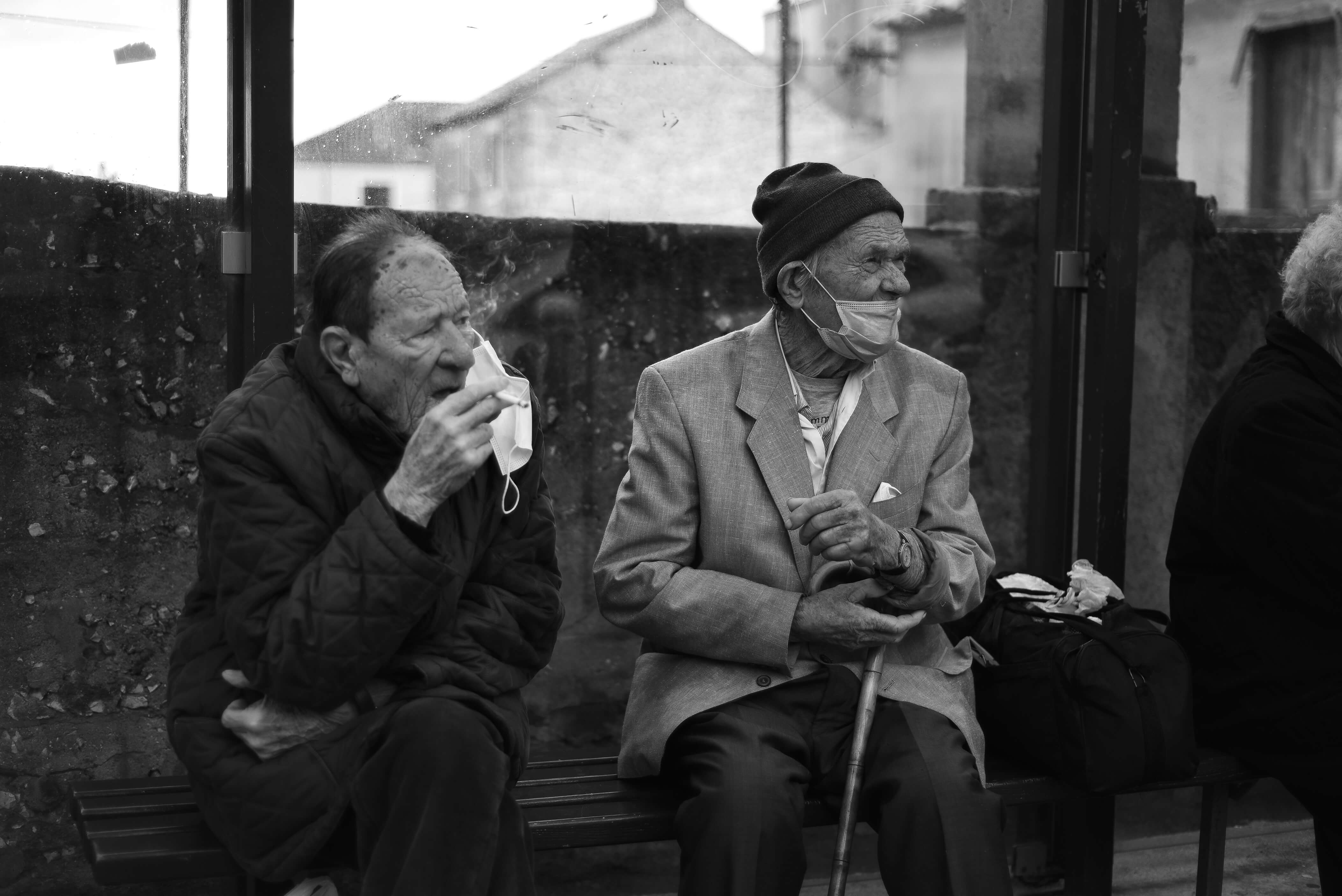
I believe that photographers like Tonka Lokas are living proof that documentary photography or street photography can still tell us thousands of stories every day in a city. I could not count the times that I have made excuses to believe that it is impossible: I do not have the camera I need, I should buy more lenses, due to the pandemic I do not know what photos I could take, maybe this city is not interesting enough... but the Images of this young photographer from Sibenik revive an inspiring phrase that I often hear from time to time: ''If you want to be a better photographer, stand in front of more interesting stuff''. Sometimes that's all it takes: paying attention.
If you want to see and learn more about Tonka’s amazing photography work and upcoming projects, you can do so by following her on her Instagram account.
You can learn more about what Šibenik can offer you on your next trip in Total Croatia’s Šibenik on a page, HERE. Total Croatia’s articles are now available in your language!
For more on art and culture in Croatia, follow TCN's dedicated lifestyle page.
Unique and UNESCO: The Fascinating and Futuristic Fortresses of Šibenik
May 12, 2021 – Using vivid modern techniques like 3D mapping and augmented reality, each of the Fortresses of Šibenik is unique. Here, we take a closer look at these fascinating, must-visit venues.
The city of Šibenik is surrounded by some of the most distinctive waters in Dalmatia. To the city's northeast, the great Krka river drops over gushing waterfalls, meeting Cikola river in the epic Krka National Park. Thereafter, it flows first into Lake Prokljan, then the bay of Šibenik. Around the water's edge in Šibenik, people enjoying in bars and restaurants. Or, in warmer months, sunbathing and swimming in the sea.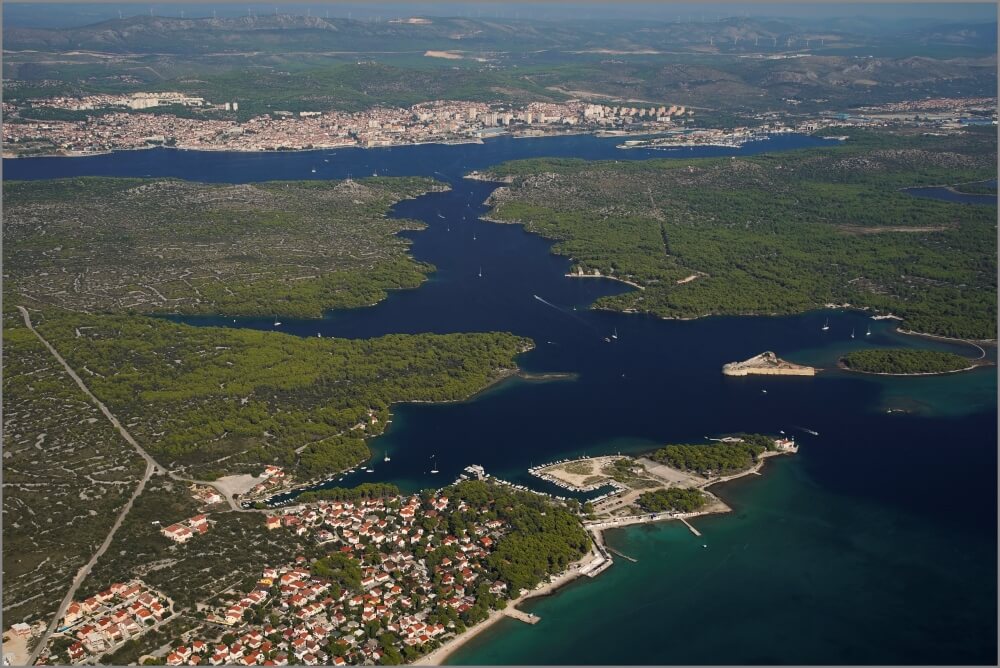 The Channel of St. Ante, with the City of Šibenik in the background and St. Nikola's Fortress in the foreground @ TZ Šibenik.
The Channel of St. Ante, with the City of Šibenik in the background and St. Nikola's Fortress in the foreground @ TZ Šibenik.
And yet, these special waters are not the only thing that makes Šibenik unique. There's much more to this city than just the sea. Not least, the unique Fortresses of Šibenik.
Actually, it's not that unusual to find a fortress, castle or fortifications in Croatian cities. After all, for several hundred years, this was the frontline of European defense against the invading Ottoman empire. However, Šibenik is unique within the entire Balkan region to have not one, but four fortresses from that era. Not only are they very well preserved, but also they have been completely renovated and thoroughly modernized.
Surprising multimedia and fascinating digital content now combine with fantastic views and unique architecture to draw visitors to the Fortresses of Šibenik. Subsequently, the four Fortresses of Šibenik now make up an unmissable part of any visit to the city.
Fortresses of Šibenik: St. Michael's Fortress
 Fortresses of Šibenik: St. Michael's Fortress @ TZ Šibenik.
Fortresses of Šibenik: St. Michael's Fortress @ TZ Šibenik.
The oldest of the four fortresses of Šibenik, iconic St. Michael's is today known as one of the most prestigious open-air concert stages on this side of the Adriatic. But, it also a place where you can learn fascinating history via spectacular modern technology. Deep within the fortress, 3D mapping techniques make 15th-century water tanks spring to life. This vivid display will transport you through centuries of exciting Šibenik history, including the story of St. Michael and the dragon.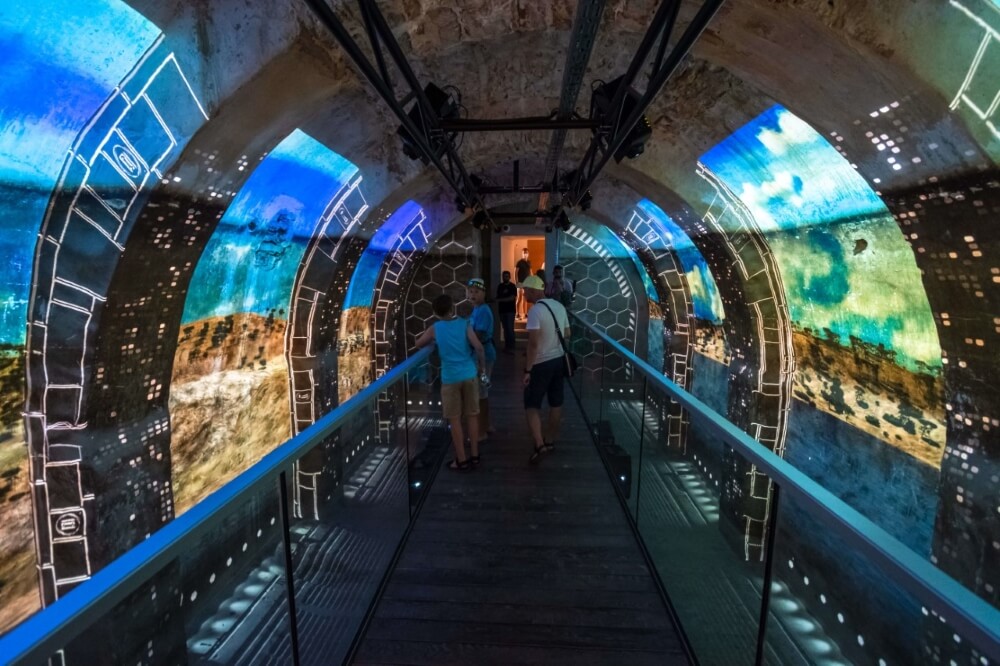 Vivid multimedia trails through the Fortresses of Šibenik @ TZ Šibenik.
Vivid multimedia trails through the Fortresses of Šibenik @ TZ Šibenik.
Fortresses of Šibenik: Barone Fortress
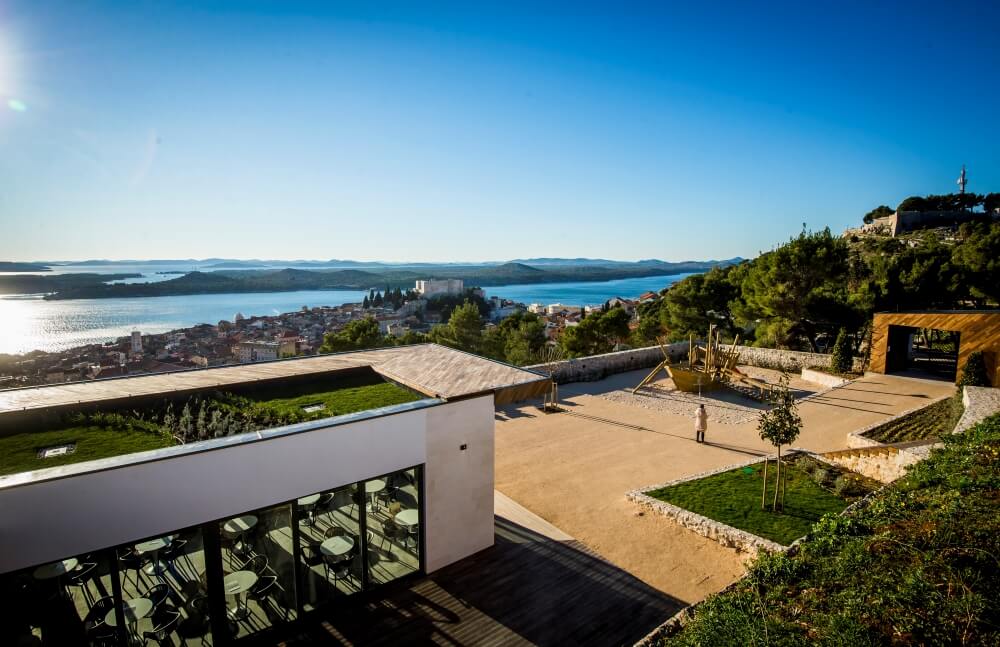 Barone Fortress @ TZ Šibenik.
Barone Fortress @ TZ Šibenik.
The latest of the four Fortresses of Šibenik to be renovated, in Barone Fortress you get a whole new dimension of reality. Actually, Barone Fortress successfully repelled the fiercest attacks of the Ottomans in the 17th century and therefore changed the course of history in this area. Via augmented reality (AR), you can relive the sights and sounds of these key moments in European history. After the thrill of experiencing the battles, you'd be well advised to take a breather on the Barone Bar’s terrace. There, you can enjoy views of the entire city, while any younger visitors can have fun on the children’s playground. Vivid multimedia trails through the Fortresses of Šibenik @ TZ Šibenik.
Vivid multimedia trails through the Fortresses of Šibenik @ TZ Šibenik.
Fortresses of Šibenik: St. Nikola's Fortress
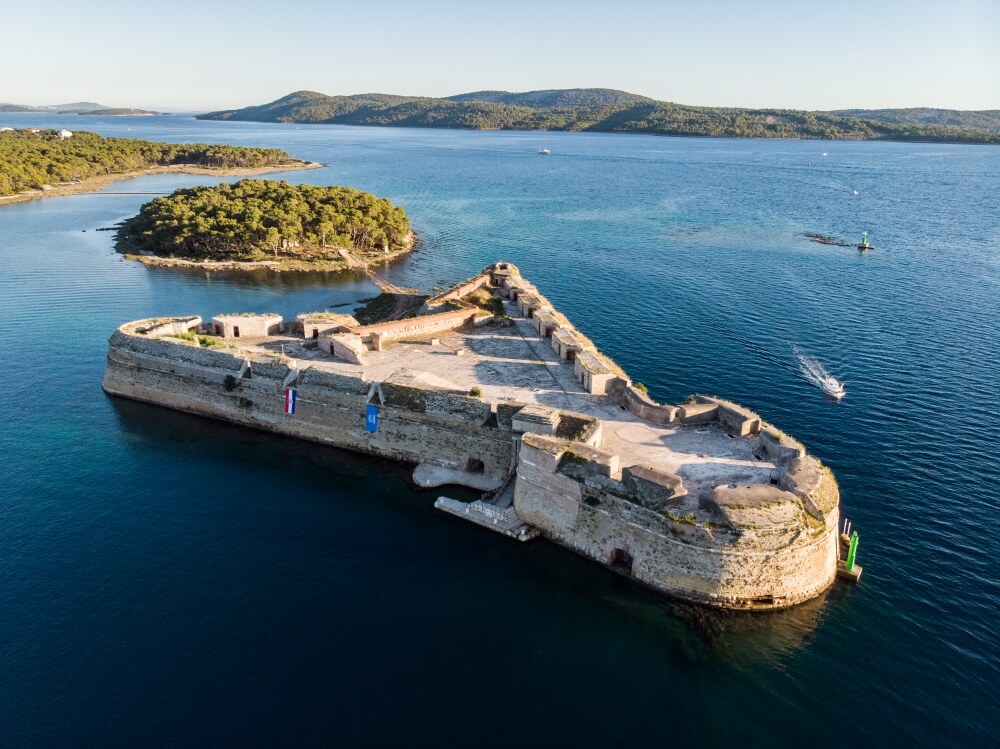 Fortresses of Šibenik: The UNESCO-protected St. Nikola's Fortress @ TZ Šibenik.
Fortresses of Šibenik: The UNESCO-protected St. Nikola's Fortress @ TZ Šibenik.
Within the Fortresses of Šibenik, St. Nicholas is unique. Not only is it the only one that sits on its own island within the sea, but also is a unique Renaissance-style Venetian fortification. As such, it is protected as a UNESCO monument of world architectural heritage.
The fortress was built on the island of Ljuljevac, in the Channel of St. Ante, where the waters of Šibenik bay meet the Adriatic. Owing to its protected status, the best way to access the fortress is on an official tour. Lasting around two hours, the tour takes you from Šibenik down the channel by boat. After arriving at the fortress, you're guided rounded the structure on a tour detailing the architectural highlights and history.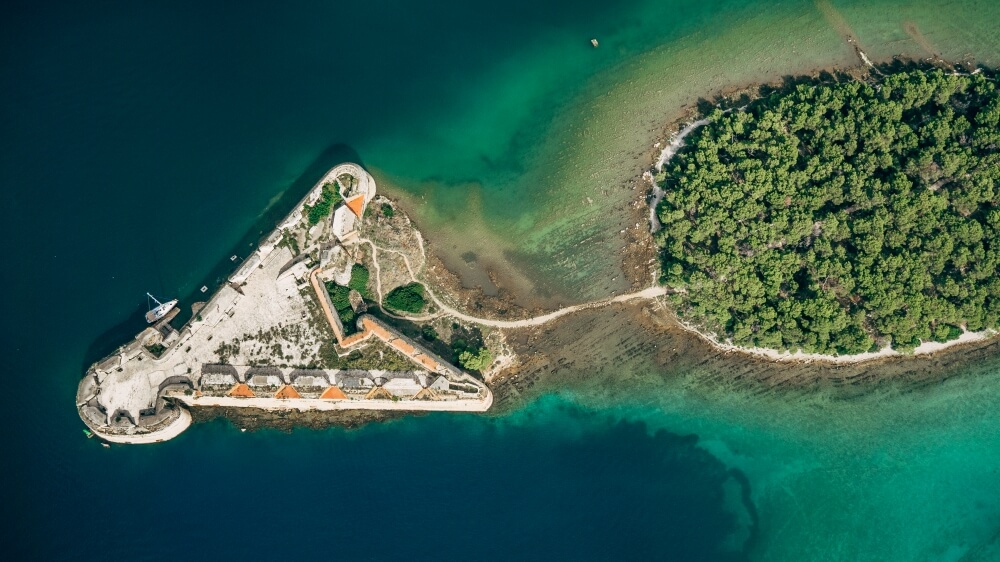 Fortresses of Šibenik: The UNESCO-protected St. Nikola's Fortress @ TZ Šibenik.
Fortresses of Šibenik: The UNESCO-protected St. Nikola's Fortress @ TZ Šibenik.
Fortresses of Šibenik: St. John's Fortress
 St. John's Fortress @ TZ Šibenik.
St. John's Fortress @ TZ Šibenik.
The medieval church of St. John the Baptist that once stood on a hill, north of Šibenik's historical centre, dates to at least 1444. It is around this church that St. John's Fortress rose up. Naturally, it's also where the name comes from. In early 1646, when it was speedily built, alongside its peers, it helped save the city from the Ottomans. Later, it continued to be used by resident armies all the way up until the times of Yugoslavia. Today, St. John's is the last of the Fortresses of Šibenik to be undergoing reconstruction. Its completion is imminent and its official reopening is planned for September 2021.
Three of the Fortresses of Šibenik are included in the pan-European Fortresses of FORTITUDE project, which links significant sites in Croatia to some in Montenegro and Bosnia. If you want to know more about that project - and learn a little more about the history of some Šibenik fortresses, then look here.
Over 10, 000 Attend Music Festivals in Sibenik In 2020 - Zero Infections
September 22, 2020 - For six consecutive weeks this summer, the Martinska venue alone welcomed over 10, 000 international visitors to its music festivals in Sibenik. Zero cases of Coronavirus occurred.
Over recent years, three things have firmly placed Croatia on the international stage – Game Of Thrones, the World Cup and music festivals. Running for over a decade now, music festivals are the oldest of these. They have elevated places like Pula and Tisno to become among the most-Googled destinations in the country.
So popular now are Croatia music festivals, that many say the summer season of music festivals in Croatia has supplanted the famous hedonistic holidays of Ibiza as the hippest place to go. Incredible disappointment was therefore felt by tens of thousands of expectant party people earlier this year when most of the international Croatia music festivals decided to cancel their 2020 events. They did so in response to the Coronavirus pandemic.
One venue stood alone – Martinska, a 20-year-old site for music festivals in Sibenik. Over six consecutive weeks, all of their 2020 festivals took place. They did so under strict adherence to epidemiological guidelines. And, following a wait of two weeks after the final event (to cover any potential Coronavirus incubation period), site organisers Pozitivan Ritam have released their results - zero cases of Coronavirus.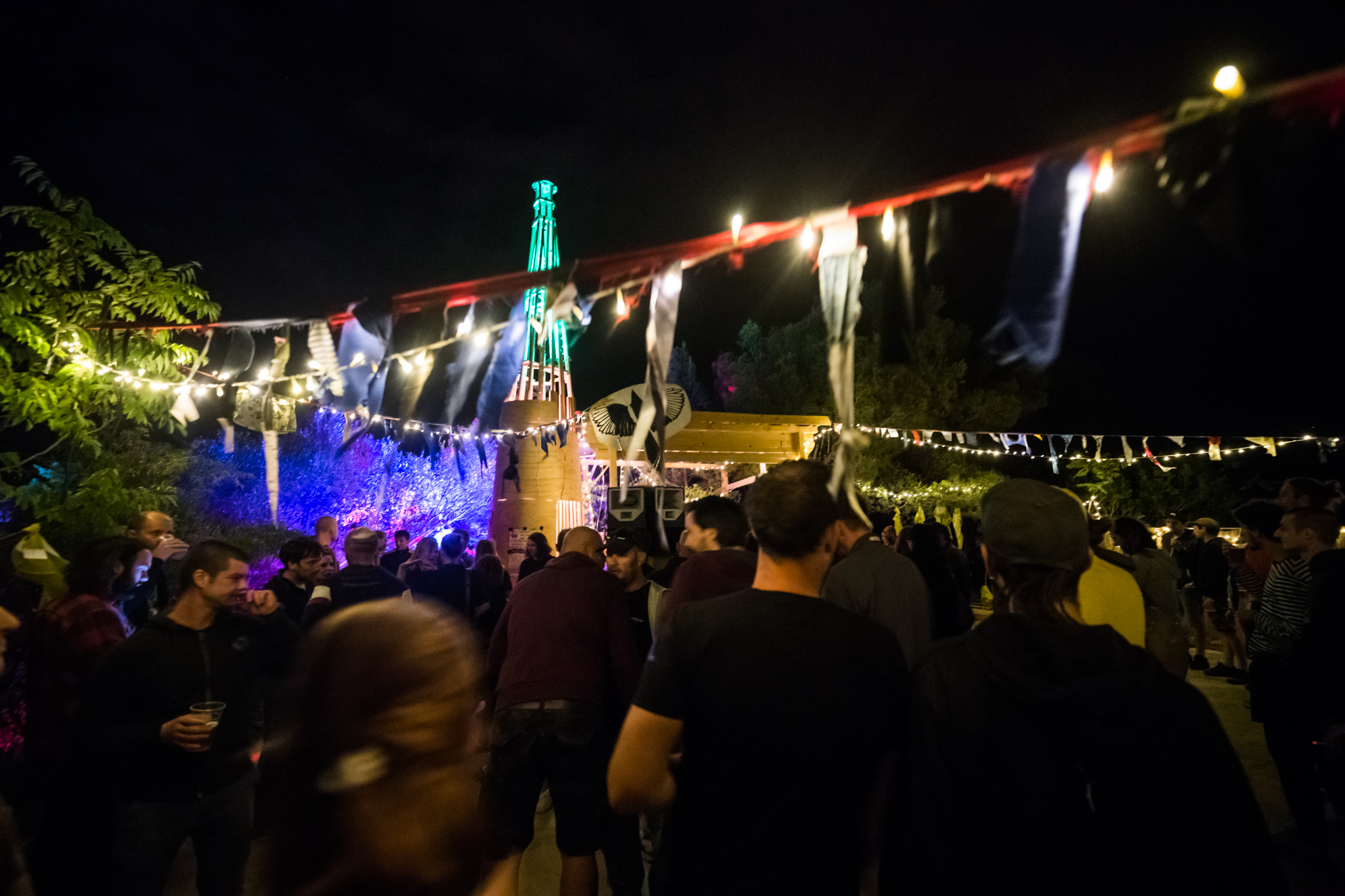
“It's not only the five festivals and one concert event that we did,” Pozitivan Ritam director Vedran Meniga told TCN, “The Fortress of Culture in Sibenik had more than 30 events this summer and Project Vojarna in Sibenik had two parties this year with over 4000 people. On one RTL television show, they described Sibenik as the Croatian Wuhan when 3000 people were in the town for one techno party there. But, at the end of the season, none of these events resulted in a single Coronavirus infection. Not one.”
Following a successful lockdown earlier in the year, cases of Coronavirus were limited in Croatia at the start of the season. Yet, some were understandably hesitant to come. Music festivals in Sibenik still managed to attract visitors from Britain, France, the Netherlands, Belgium and Germany to Martinska. Even after the middle of August when cases began to appear in other regions and international visitor numbers dried up, the festival site was still busy with Croatians and partygoers from near-neighbouring countries. At the end of August, there were no more than five infected persons in Sibenik. None were music festival or music event attendees. Throughout much of the summer, Sibenik recorded zero cases.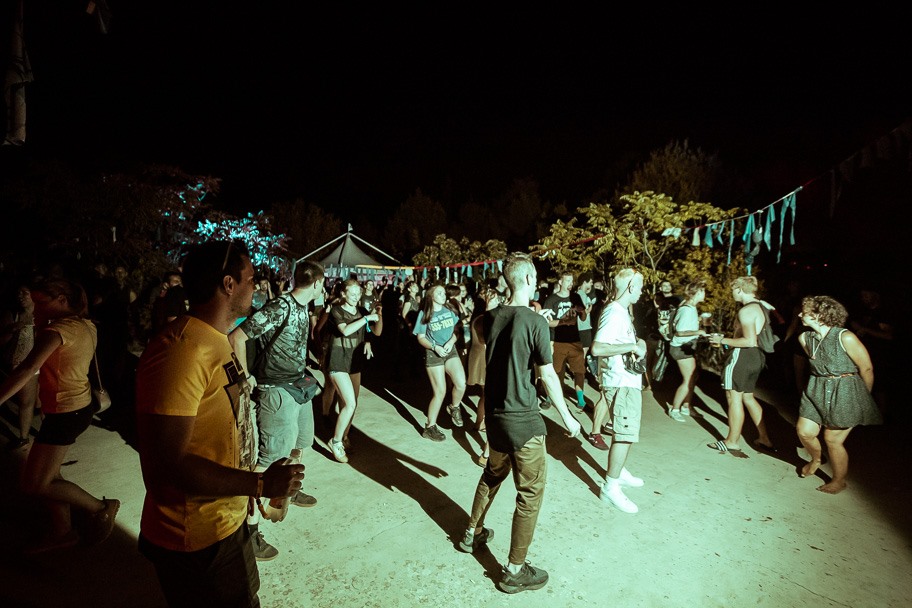
“The music festivals in Sibenik are proof that it's possible to work doing events during the era of Corona,” Meniga tells TCN. “Of course, all of our events were open-air and no doubt that helped.”
"When cases started to reappear elsewhere at the end of July, I went to the civil authorities and epidemiologists immediately, before they came to us,” says Vedran. “The civil authorities and the police grant the license for the events. I presented them with a plan and they were satisfied. They allowed us to continue.”
“It helped that Martinska is across the bay from Sibenik. Festival attendees don't even need to go into the town to come, they drive here straight from the Magistrala (Croatian coastal highway). Also, Martinska's capacity is five times bigger than the numbers we were going to cater for. The site can accommodate six to seven thousand. We expected no more than 1500 daily. That was more than enough space to maintain physical distance. We carefully took all contact details for each attendee at the entrance, in case something appeared and we (or authorities) had to later contact people. We also took everyone's temperature. And in addition to the required epidemiological sanitization, we also installed disinfectant pillars at every single point where money or goods exchanged hands. All our staff wore not only masks but also gloves. Four times the civil authorities made surprise visits to the site for inspection along with epidemiologists and police. Each time they were completely satisfied.”
Current forecasts for the Coronavirus response predict that a vaccine will not be available to cover everyone until the autumn of 2021. This has serious implications for at least one more tourist season. Yet, with the incredible achievements seen this summer at Martinska's music festivals in Sibenik, we can all take hope that events, tourism, and even life itself may continue to be enjoyed in the near future, as long as we're all smart about it.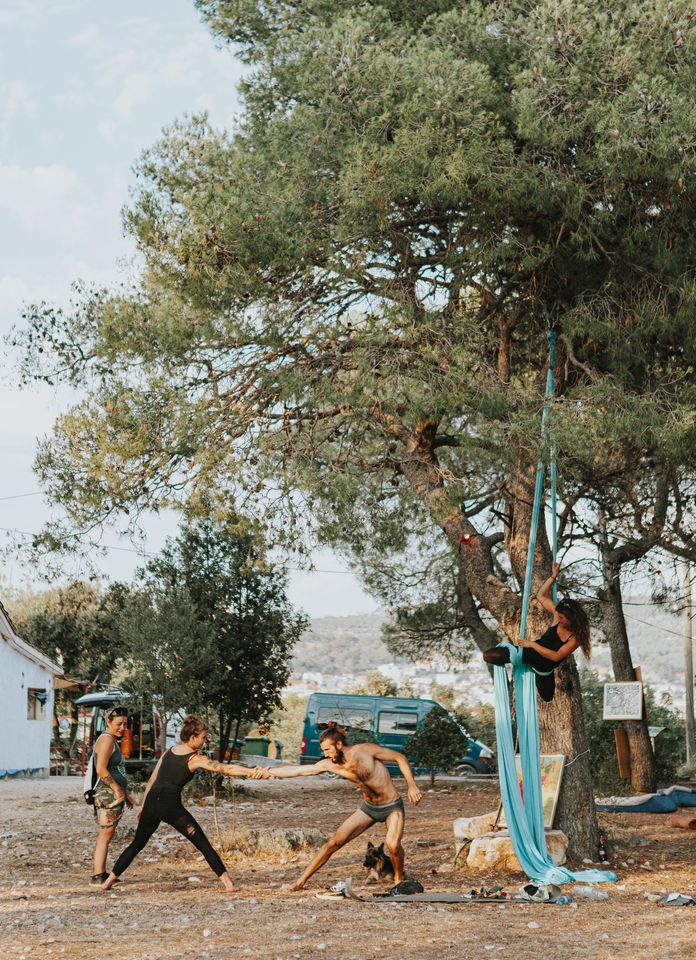
All photos 2020 Martinska © Seasplash / Pozitivan Ritam.
For the latest travel info, bookmark our main travel info article, which is updated daily.
Read the Croatian Travel Update in your language - now available in 24 languages
VIDEO: See The Wild Birds Of Krka National Park And A UNESCO World Heritage Site In Šibenik
July 22, 2020 – VIDEO: See The Wild Birds Of Krka National Park And A UNESCO World Heritage Site In Šibenik
Known for its series of cascading waterfalls, its picturesque pools and its acres of lush vegetation, Krka, just outside Šibenik, is one of Croatia's most-loved National Parks. But, scoring the skyline overhead and resting in its trees you can spot one of its other best attractions; the wild birds of Krka National Park.
The National Park has released a new video showcasing just some of the 229 species of birds that call Krka home. Now, you don't have to strain your eyes to see some of its wondrous winged inhabitants. Also visible in the film is the park's Visovac island and its postcard-pretty monastery.
The wild birds of Krka National Park
The short but stunning video catches kingfishers, ducks, buzzards, kestrels, cormorants, swallows and others, in flight or at play on the water's surface. But, should you choose to visit Krka National Park, there's the chance of seeing even rarer birds that sometimes live there, such as ospreys, eagles, falcon and griffon vulture.
Situated just a few kilometres from well-known seaside destination Šibenik, in summertime Krka becomes one of the most popularly visited National Parks in the country. Visitors who can't spend their entire vacation on the beach love to make the short journey inland for a day of stunning natural beauty, shaded on the pathways as they walk by trees like umbrellas. The Fortress of St. Nicholas, just off Šibenik, the best-preserved Venetian defensive structure in Croatia and a UNESCO World Heritage Site © Sebastian Gößl
The Fortress of St. Nicholas, just off Šibenik, the best-preserved Venetian defensive structure in Croatia and a UNESCO World Heritage Site © Sebastian Gößl
And, there's never been a better time to take in the park. Visitor numbers to the region are understandably down on 2019 and so Krka National Park this year offers a more peaceful and unhurried experience than in many previous seasons. If that wasn't incentive enough, tickets for the park in summer 2020 hold a 10% discount to entry of the Fortress of St. Nicholas in Šibenik, a UNESCO World Heritage Site. The best-preserved Venetian defensive structure in Croatia, the fortress has undergone considerable reconstruction work over recent years and only opened itself up to the public again in 2019.
Sibenik Tourism: City Wants to Breathe Life into Old Town Outside Season
Sibenik tourism has risen over the past few years, with this gorgeous historic Dalmatian town popping up on the ''must visit'' radars of more and more people, but just how can the situation outside of the warm summer season be improved, and how can Croatia's rising star of EU fund withdrawal succeed in extending their season?
As Morski writes on the 31st of January, 2020, the Sibenik City Tourist Board, in cooperation with the City of Sibenik, has for the second time now made an announcement of a public invitation for the application of manifestations and events for the award of grants from the programme "Let's go to the city" (Idemo do grada) in 2020 for the area of the old city centre.
The subject of the public invitation is the award of grants from the Sibenik Tourist Board for events held outside of the main summer tourist season as the main motive for the arrival of locals, Croatian and foreign visitors to the destination, which contribute not only to Sibenik tourism as a whole, but also to the following goals:
- Attracting locals, domestic and foreign tourists to the old town of Sibenik;
- The development of tourism and the valorisation of cultural and historical heritage;
- Raising the quality and quantity of Sibenik's cultural and tourist offer;
- The development of content that enables the improvement of the quality of Sibenik tourism's season, as well as its extension;
- The promotion of the city of Sibenik, and especially the old city centre both at home and abroad;
- The creation of a recognisable image of Sibenik tourism
The public call for grants from the ''Let's go to the city'' grants refers exclusively to the events held during the pre-season, ie, in the months of February, March, April and May, and then in the post-season, respectively in the months of October and November. The public invitation also regards events that will take place exclusively in the area of the old town of Sibenik as a defined cultural and historical entity.
The budget funds for this public call are 200,000 kuna in total and are provided by both the City of Sibenik and the City of Sibenik Tourist Board.
The deadline for submitting applications is February the 17th, 2020.
Follow our travel page for more.
Condé Nast Traveller Recommends Holidaying in Šibenik in August
August the 14th, 2019 - Šibenik is without a doubt one of the Dalmatian coast's must-see destinations, but in comparison to cities like Split and Dubrovnik, it often ends up somewhat in the shadows. Wrongly so.
This UNESCO city with more history, culture and heritage than one can imagine is home to not only the International Children's Festival, but numerous stunning fortresses, gorgeous beaches, and much more. Often referred to as a gate to the glorious Kornati islands, this city is unlike the majority of other, similar cities dotted along Croatia's stunning coasline, Šibenik was not established by the Greeks, the Romans or the Illyrians, but by the Croats themselves.
This unique city has become not only a rising tourism star but a shining example of the proper use of EU funds. One could go on and on about what makes Šibenik so wrongly underrated and overlooked when compared to other cities in Croatia, but the numbers speak for themselves, and it seems that Šibenik is now firmly on the radar - and on an international scale.
Condé Nast Travelleré Nast Traveller, the internationally known and respected travel portal with its base in the United States, has won as many as 25 national magazine awards and has no trouble grabbing the attention of the masses with its alluring write-ups and glossy images. Šibenik has found itself listed by the site yet again.
Condé Nast Traveller has listed Šibenik on its list of where you should go on holiday in August.
The magazine writes:
''Croatia, believe it or not, is still actually an option, even though its picture-perfect medieval cities and extraordinary coastline welcomed 20 million visitors last year. And one sometimes suspects that all 20 million turn up in August, when those straight-out-of-a-fantasy-novel fortified towns are bursting at the seams. Thank heavens, then, for Obonjan. This wellness retreat from the team behind the Hideout festival, sprawling across a private island of the same name, got off to a shaky start when it launched in 2016. But the kinks have been completely ironed out, and guests are guaranteed a tempting mix of yoga classes, chill-out music and glamping. Spare some time as well for Sibenik, a short speedboat ride away: a major historic city and a lovely labyrinth of chalk-white stone. A day’s sailing around the Kornati Islands – unpopulated idylls given over to vineyards, orchards, and little else – also supplies some much-needed mellow.''
Why not go and see for yourself just why Šibenik keeps getting mentioned by publications from across the globe?
YouTube/Cities in 4K
Check out our extensive Šibenik in a Page for everything you need to know about this beautiful coastal city, and give our dedicated travel page a follow for more on Croatia's many destinations.
Everything is Ready for Seasplash Festival in Šibenik!
As Morski writes on the 17th of July, 2019, more than fifty well known names from the music world and an audience from all over Europe are set to come to the Dalmatian city of Šibenik this week for the seventeenth Seasplash festival, which will be held in the area of the former Martinska campsite for the first time this year, which is directly across the popular historic city.
Lee "Scratch" Perry, Adrian Sherwood, the Scientist and the Mad Professor - a quartet of still very much active legends of dub and reggae will perform on the main stage of the seventeenth Seasplash Festival.
For the very first time in its seventeen-year history, Šibenik's Seasplash Festival will be opened with a very special concert on one of the most beautiful stages of the Adriatic - the Fort of St. Mihovil in Šibenik.
Yesterday, on Wednesday, July the 17th, at the aforementioned location in Šibenik saw some great musicians perform there, led by the New York Ska-Jazz Ensemble. Along with this unique concert attraction and a group that founded the jazz-ska genre, the full opening concert will be enhanced by the renowned local roots reggae band from Zagreb, Brain Holidays, as well as the legendary Bass Culture Sound System.
In order to make arrival at Martinska and the Seasplash Festival as quick and easy as possible, day boat lines with the "Avalon" boat have been introduced and wil operate both during the day and during the night.
Daily roundtrips will travel six times per day to the bus station Šibenik - Mandalina - Šibenik waterfront (riva) - Martinska, at 08:00, 10:00, 12:00, 15:00, 17:00 and 19:00, and from Martinska they'll travel at 09:00, 11:00, 13:00, 16:00, 18:00 and 20:00.
A ticket price will be just ten kuna, and tickets will be available for purchase when on board. The night line began yesterday, it went from Šibenik to Martinska at 02:00. On Thursday, Friday, Saturday and Sunday, during the actual Seasplash Festival, it will leave Šibenik and head for Martinska at 21:00, 23:00, and 01:00, and the return journey will be organised by bus at 06:00.
The price of a one way ticket is twenty kuna, and a return ticket costs thirty kuna, as was noted from the City of Šibenik's administration.
Follow our dedicated lifestyle page for much more.
Šibenik's Banj Beach Listed Among Top Nine Beaches in World!
June the 24th, 2019 - Šibenik is a truly beautiful, historic Dalmatian town which is becoming increasingly popular among foreign tourists from all over the world. Without the incredible amount of publicity other Croatian cities like Split and Dubrovnik, Šibenik has managed to find its own way and has done so extremely successfully.
Caring for its local population much more than the likes of Dubrovnik has ever done, not to mention its numerous UNESCO protected sites, this stunning Dalmatian city has a range of achievements under its belt when it comes to sustainable tourism and refusing to alienate the locals.
Often looked upon as a shining example when it comes to the withdrawal and use of European Union funds, especially when the rest of Croatia continues to lag behind (much like in almost everything else), Šibenik rarely has a negative headline printed about it, which is more than a rarity in Croatia.
This beautiful city is full of history from the Greeks to the Illyrians and the Romans, and has a very rich and diverse past to boast of. Culture can be found without even trying and the surrounding area, as well as the wider Šibenik-Knin County, is as full of unspoiled nature as it is fascinating history.
It seems that one popular travel portal, Kiwi, has recognised Šibenik's natural beauty, and the local Banj beach has been listed among the nine best beaches for 2019, according to their readers. From Bermuda to Croatia, the portal's readers have their public say on beautiful beaches.
Listed after beautiful Marathi Bay in Crete, Greece, Kiwi writes: ''While it has always been a desired tourist destination, Croatia is currently experiencing a massive boom. It is perhaps because the Balkan country has got into the spotlight with its old city of Dubrovnik that has been featured in the famous series Game of Thrones. But with hundreds of kilometres of a picturesque shore, colossal mountains, unique natural parks, and rich history, Croatia has a myriad of the nicest places to visit.
Between Zadar and Split in the southern part of the country lies the city of Šibenik. Its magnificent medieval heart that welcomes thousands of tourists every year can be best seen from the nearby beach called Banj. Built in 2012, the beach has quickly gained the title of the most popular spot in the entire city and offers the best view over Šibenik’s St. Michael’s Fortress and St. Anthony Channel.
Apart from the unforgettable panorama, Banj provides its visitors with all the basic amenities a cool beach needs as well as a boasting party nightlife during the whole season.''
Make sure to follow our dedicated travel page for much more.
To find out more about Šibenik, CLICK HERE.
Visiting Šibenik's St. Nicholas Fortress? Here's What You Should Know
As Juraj Filipovic/Morski writes on the 19th of June, 2019, on Saturday, Šibenik's St. Nicholas (Sv. Nikola) fortress was finally opened to the public. This marks yet another sight in the city protected by UNESCO. The opening was preceded by highly demanding works to make sure the fortress was operational to finally begin to make the most of its tourist, cultural and economic potential.
This season, this newly opened fortress can only be reached by boat from Šibenik. From mid-June to mid-October this year, the boat will depart from Šibenik according to its pre-arranged schedule, and make the journey back and forth four to five times per day.
This all-encompassing experience of Šibenik and its wider area, including a boat ride through the Sv. Ante channel and the visit the fortress St. Nicholas lasts about two hours. Tickets are 130 kuna per piece (for adults), and can be purchased at the point of sale on the Šibenik riva (waterfront) or online.
The price includes a boat ride, a ticket for the St. Nicholas fortress, a mobile multilingual guide for every visitor, educated staff, and the story about this truly unique location which is also a UNESCO World Heritage Site.
''On the first working day after the fortress was opened, from June the 16th, tickets were free for all visitors to celebrate.
During the first few days of the functioning of the fortress, which will last from June the 17th to June the 28th, residents of Šibenik-Knin County will be offered a free visit to the fortress with the reservation of a free ticket and their ID card as proof of their residence in the county, at the Fortress of St. Nicholas' info centre on the Šibenik riva, the address of which is Obala dr. Franje Tuđmana 4,'' stated Anita Babačić Ajduk, the director of the Public Nature Institution of Šibenik-Knin County, which has coordinated the whole project for the past several years.
She also pointed out that nothing would have been possible without the totally selfless support of all participants who recognised the importance and potential of this amazing Šibenik fortress.
''Over the past three years, about five million kuna has been invested in its reconstruction, of which four million kuna has been allocated from the budget of Šibenik-Knin County, while the rest was financed by the Croatian Ministry of Culture,'' added Ajduk, expressing her satisfaction with how things have gone, and how this historic Dalmatian city can now valorise the fortress' potential in both a cultural and a touristic sense.
Make sure to follow our dedicated travel page for much more.


